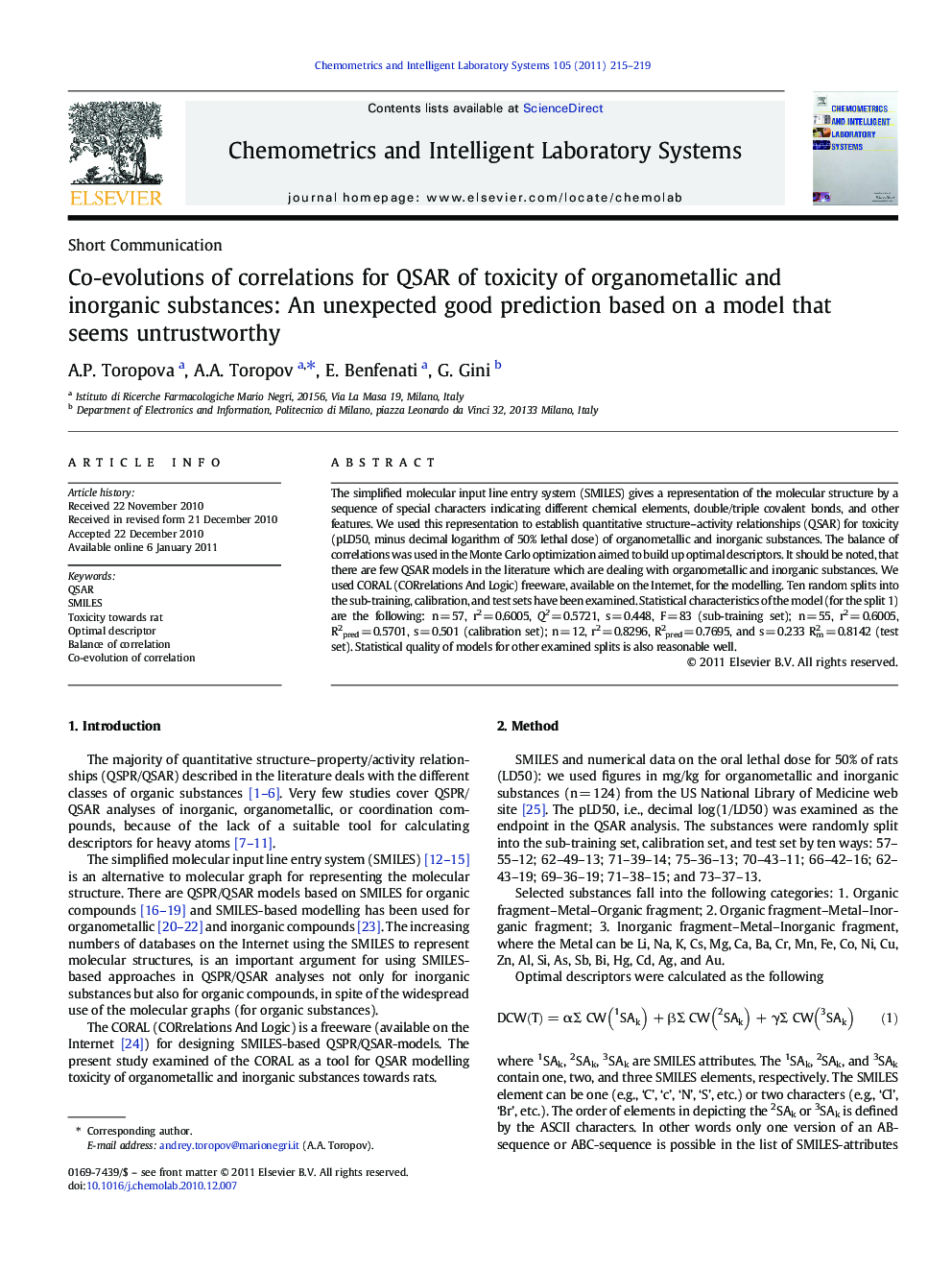| Article ID | Journal | Published Year | Pages | File Type |
|---|---|---|---|---|
| 1181545 | Chemometrics and Intelligent Laboratory Systems | 2011 | 5 Pages |
The simplified molecular input line entry system (SMILES) gives a representation of the molecular structure by a sequence of special characters indicating different chemical elements, double/triple covalent bonds, and other features. We used this representation to establish quantitative structure–activity relationships (QSAR) for toxicity (pLD50, minus decimal logarithm of 50% lethal dose) of organometallic and inorganic substances. The balance of correlations was used in the Monte Carlo optimization aimed to build up optimal descriptors. It should be noted, that there are few QSAR models in the literature which are dealing with organometallic and inorganic substances. We used CORAL (CORrelations And Logic) freeware, available on the Internet, for the modelling. Ten random splits into the sub-training, calibration, and test sets have been examined. Statistical characteristics of the model (for the split 1) are the following: n = 57, r2 = 0.6005, Q2 = 0.5721, s = 0.448, F = 83 (sub-training set); n = 55, r2 = 0.6005, R2pred = 0.5701, s = 0.501 (calibration set); n = 12, r2 = 0.8296, R2pred = 0.7695, and s = 0.233 Rm2 = 0.8142 (test set). Statistical quality of models for other examined splits is also reasonable well.
